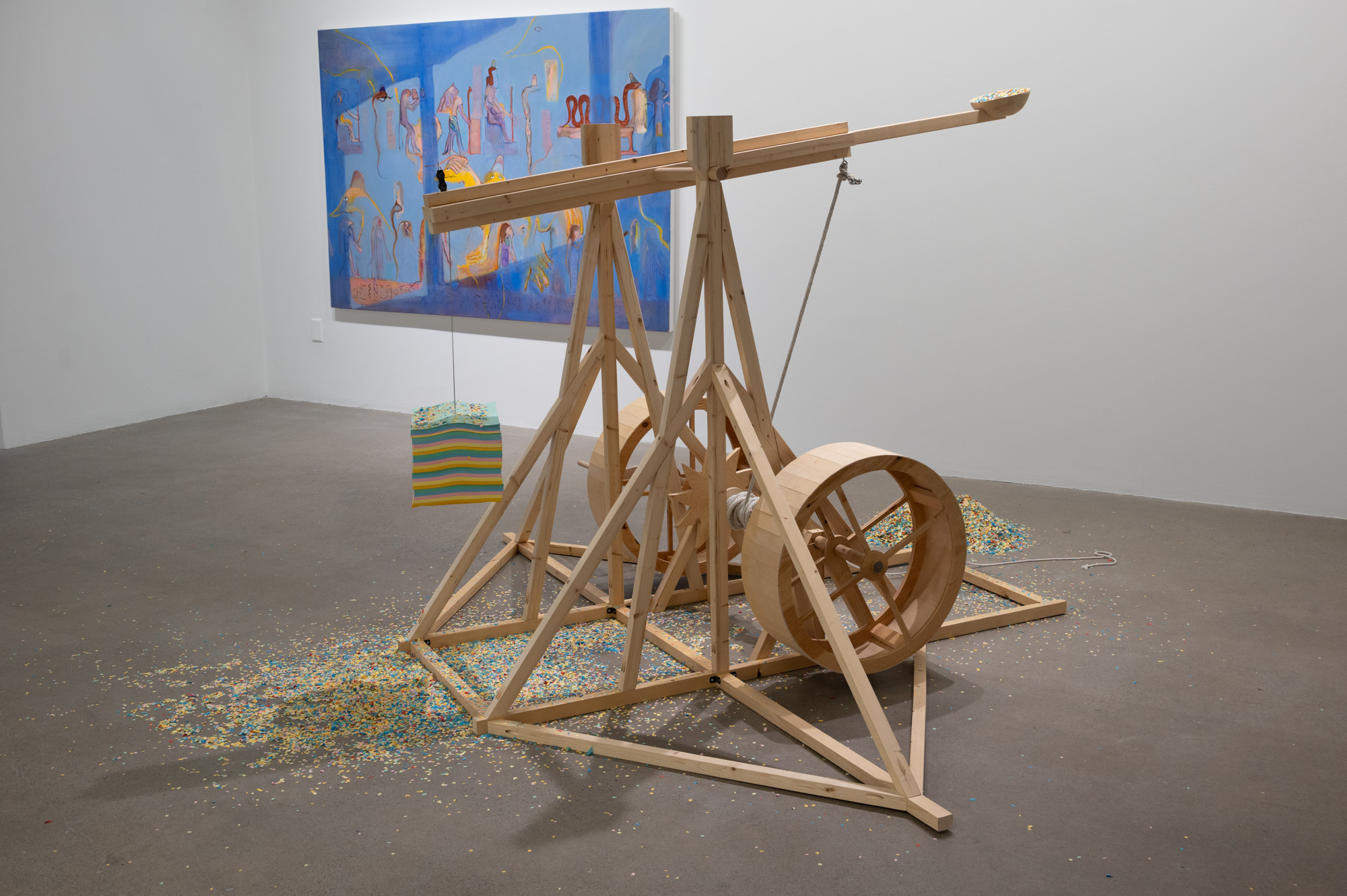Curated by Gabrielle Sarthou
May 12 – June 11, 2022
May 12 – June 11, 2022




Photo credit : Paul Litherland
Points de bascule (Tipping Points) evokes
that liminal moment before falling, which exists in a vertiginous
in-between. It represents the fragile threshold beyond which a
modulation, even a tiny one, can tip a system into an entirely new
state.As
I looked through all the portfolios, I was able to note the artists’
generational concerns and, in particular, two distinct ways of dealing
with the world: by expressing anxiety or by trying to hide this anxiety
through aesthetics.One can envisage a parallel with the way in which capitalism is deployed. Threatening the environmental ecosystem and at the same time engendering a world of stifling and chaotic megalopolises, capitalism also gives rise to an actual economy of the beautiful and an aestheticization of everyday life. In their book L’esthétisation du monde1, Gilles Lipovetsky and Jean Serroy observe that by “creating a global chaotic economic landscape while stylizing the everyday world, capitalism is less an ogre devouring its own children than a two-faced Janus2.” Each gallery is conceived as a function of two complementary and consubstantial poles: weakening and aestheticization of the world. Thus, the binarity that emerges between darkness and light is burst apart. Blackness can contain life, and light, sometimes too bright or white, can also burn us.
Weakening of the world refers to the darker side of things. It presents works that capture the essence of factures and destruction.
Aestheticization of the world evokes human beings’ ability to “beautify” the things around them, whatever they are.
— Gabrielle Sarthou (translated by Kathe Roth)
1. Gilles Lipovetsky and Jean Serroy, L’esthétisation du monde. Vivre à l’âge du capitalisme artiste (Paris: Gallimard, 2013).
2. Janus, the Roman god of beginnings and endings, of choices, of transitions and doors, is represented with two faces: one turned toward the past, the other toward the future.